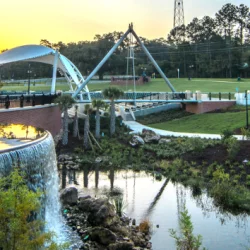How You Can Get Financial Assistance for Septic Systems in Florida
The Florida Department of Environmental Protection announced a Septic Upgrade Incentive Program. The goal is to improve the quality of water and protect Florida’s springs. This program encourages homeowners to enhance conventional septic systems by adding advanced features that would reduce nitrogen pollution. According to digital marketing agency Chicago, many Floridians on the Internet are looking for the best solution for their septic system.
Nitrogen is one of the nutrients that can fuel harmful algal blooms and impair water quality in the state’s coastal and inland waters. Twenty four of the state’s 30 first magnitude springs are impaired by excess nitrate-nitrogen. Nitrate-nitrogen is an inorganic form of nitrogen that is highly mobile in the environment and readily available as a nutrient source to the organisms that cause algal blooms. There are roughly 2 million septic systems in Florida, most of which are conventional systems that have minimal ability to remove nitrogen. This is why septic systems are the source of nitrogen to the groundwater that feeds springs. Other potential sources of nitrogen include urban and agricultural fertilizers, livestock waste, atmospheric deposition, and wastewater treatment facilities.
Conventional septic systems remove very little nitrogen. They contain two parts - a septic tank and a drainfield. Once wastes enter the septic tank, solids settle out and are slowly degraded by anaerobic bacteria in the tank, while liquids (septic tank effluent) move onward through a series of pipes to the drainfield. Most of the nitrogen in septic waste is in the form of organic nitrogen, but the anaerobic conditions of the septic tank cause it to quickly convert to ammonia-nitrogen. Further on, ammonia-nitrogen is converted to nitrate-nitrogen in the oxygen-rich soil. Nitrate is highly mobile in soils and can quickly leach to underlying groundwater, as conventional septic systems have no mechanism to capture or remove it. Conventional septic systems protect human health from the pathogenic organisms in water, but they are not designed to remove nitrogen. A conventional septic system can remove only about 30% of the nitrogen that enters it.
This Septic Upgrade Incentive Program is designed to offset homeowner costs by providing certified installers, licensed plumbers, and septic tank cleaning Miami companies with up to $10,000 after the installation of enhanced nitrogen-reducing features to existing septic systems located in targeted areas within eligible counties. Designed areas are identified and delineated by DEP as Priority Focus Areas in Citrus, Hernando, Leon, Marion, Orange, Pasco, Seminole, Volusia, and Wakulla counties. This will effectively reduce the cost to the homeowner for the septic system upgrades.
Tina Vielhauer, director of DEP’s Division of Water Restoration Assistance stated: “We encourage homeowners in these Priority Focus Areas to take advantage of this new Septic Upgrade Incentive Program. Every homeowner who does their part to upgrade a septic system brings us one step closer to our goal of significantly lowering nutrients in Florida’s springs.”
The enhancements to septic systems include retrofitting septic tanks with advanced pre-treatment, recirculating aerobic treatment units, or replacing traditional septic tanks with upgraded nutrient-reducing technology.
According to real estate experts who write for us on real estate, the incentives are available for payment directly to septic system installers and licensed plumbers retained by homeowners to update existing systems. However, these incentives must be pre-approved by the department prior to the commencement of work.
More to Read:
Previous Posts:




